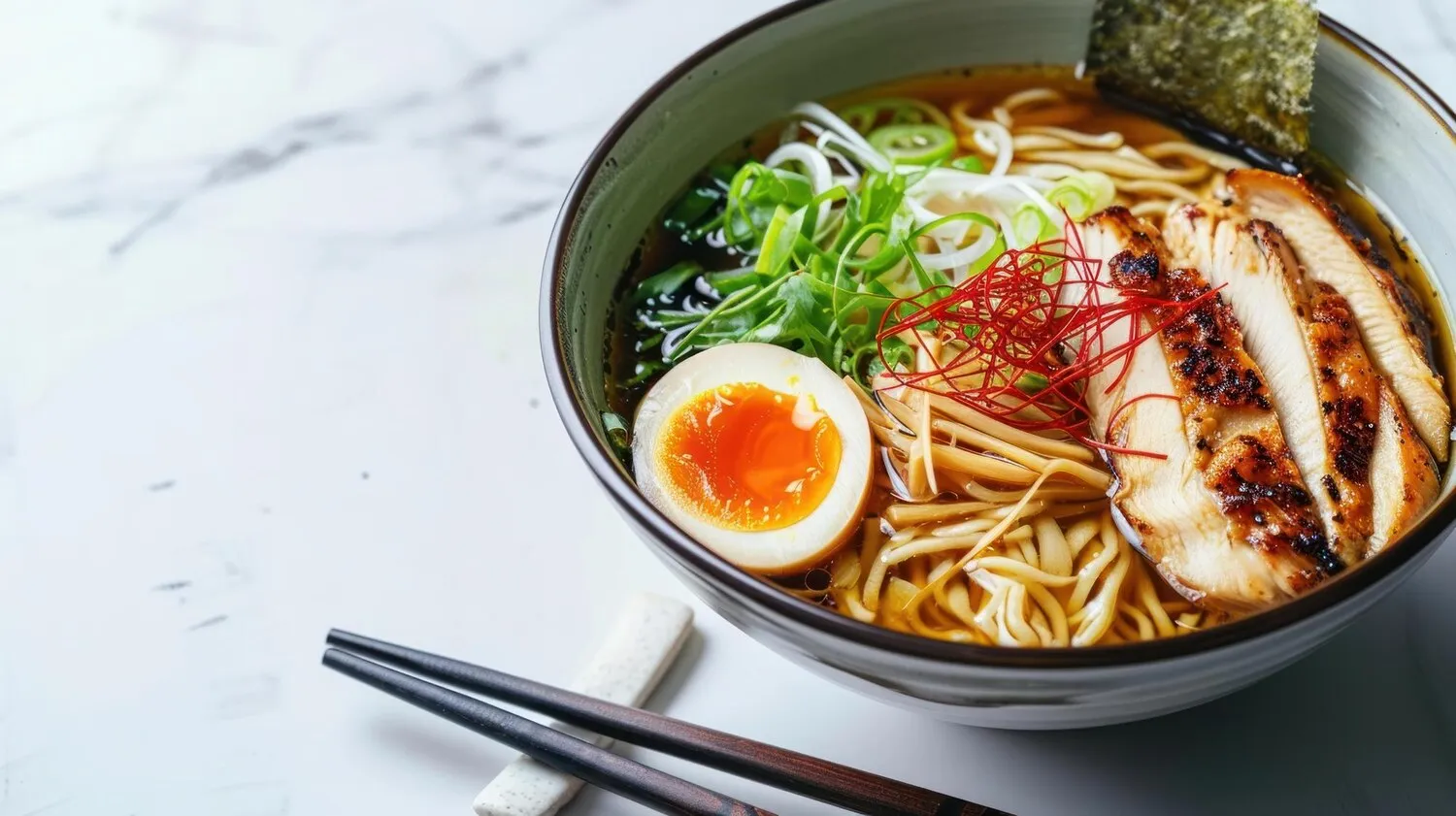
Ramen
Japanese noodle soup.
Nutrition Facts
* The % Daily Value (DV) tells you how much a nutrient in a serving of food contributes to a daily diet. 2,000 calories a day is used for general nutrition advice.
Toyama
Ramen's roots trace back to Chinese wheat noodles, introduced to Japan possibly as early as the 17th century but gaining significant popularity in the late 19th and early 20th centuries, particularly in Yokohama's Chinatown. After World War II, cheap wheat flour imports and returning soldiers familiar with the dish fueled its widespread adoption across Japan, evolving into the regional variations we know today.
Ramen is deeply ingrained in Japanese food culture, evolving from a humble street food to a culinary art form celebrated for its regional variations and the dedication of ramen chefs (often called 'ramen-ya'). It represents not just a meal, but also a cultural experience and a symbol of comfort and community.
Regional Variations
Each region of Japan has developed its own unique ramen style, reflecting local ingredients and preferences. Examples include Hakata ramen (tonkotsu broth with thin noodles), Sapporo ramen (miso broth with butter and corn), and Kitakata ramen (a shoyu broth with wide, flat noodles).
Ramen Shops
Ramen shops are an integral part of Japanese cityscapes, ranging from small, intimate establishments to larger, more modern restaurants. The atmosphere is often bustling and focused on efficiency, with customers slurping their noodles quickly and leaving to make room for others.
Ramen as Comfort Food
Ramen is a popular choice for a quick, affordable, and satisfying meal, especially after a long day or on a cold evening. It evokes feelings of warmth and nostalgia for many Japanese people.
Ramen boasts a rich umami flavor profile, characterized by a complex interplay of savory, salty, and sometimes sweet or spicy notes, all harmonizing within a deeply flavorful broth.
The flavor of ramen is built upon several key components. The broth (dashi) forms the foundation, typically made from pork bones (tonkotsu), chicken bones (torigara), beef bones, fish (niboshi), kelp (kombu), and/or vegetables. The tare, a concentrated seasoning added to the bowl before the broth, contributes the core salty and savory elements. Common tare bases include soy sauce (shoyu), salt (shio), miso, and even curry. Noodles, made from wheat flour, water, salt, and kansui (alkaline mineral water), contribute a distinct texture and subtle flavor. Toppings like chashu (braised pork belly), menma (fermented bamboo shoots), nori (dried seaweed), negi (scallions), ajitsuke tamago (seasoned soft-boiled egg), and mayu (black garlic oil) add further layers of flavor and texture.
Slurping is Encouraged
Slurping noodles is not considered rude in Japan; it's believed to enhance the flavor and helps cool the noodles down as you eat them.
Customize Your Order
Many ramen shops allow you to customize your order, specifying your preferred noodle firmness, broth richness, and topping preferences. Don't be afraid to ask!
Respect the Chef
Ramen chefs take great pride in their craft. Be mindful of the shop's rules and etiquette, and appreciate the care and effort that goes into each bowl.
Kaedama (Noodle Refill)
In some ramen shops, particularly those serving Hakata-style ramen, you can order 'kaedama,' a second serving of noodles to add to your remaining broth.
Explore additional Noodle soup dishes and restaurants
Explore Noodle soupDiscover top dining spots and culinary experiences in Paris.
Explore ParisLearn more about the food culture, restaurant scene, and culinary heritage of France.
Explore France